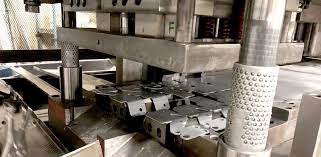In the realm of modern engineering and industry, hydraulic systems stand as a formidable force driving countless applications. Utilizing fluid power, these systems excel in generating, regulating, and transmitting force, revolutionizing sectors with their efficiency and adaptability. Let’s dive into the world of hydraulics, exploring its applications, advantages, and the pivotal role of geogrid in optimizing functionality.

Understanding Hydraulic Systems
Hydraulic systems leverage liquid to transmit force, composed of a reservoir housing hydraulic fluid, a pump for pressurization, and actuators like cylinders or motors. This pressurized fluid, when directed through the system, creates force capable of lifting heavy loads, driving machinery, or executing various tasks.
Versatile Applications of Hydraulic Systems
Hydraulic systems find applications across diverse industries. In construction, they power heavy machinery such as excavators and cranes, enabling precise movements and substantial lifting capabilities. The automotive industry relies on hydraulics for braking systems and power steering, ensuring safety and control. Additionally, they play crucial roles in aerospace, agriculture, and manufacturing for specialized tasks.
Advantages of Hydraulic Systems
Hydraulic systems boast the ability to generate immense force with compact components. They offer precise control, high power density, and adaptability to diverse environmental conditions. Their efficiency in transmitting power over long distances without significant force loss renders them invaluable for numerous applications.
Geogrid’s Role in Enhancing Hydraulic Systems
Geogrid, a geosynthetic material made from polymers, fortifies soil, enhancing its load-bearing capacity. In hydraulic engineering, geogrid stabilizes soil in various applications like retaining walls, embankments, and slope reinforcement. This reinforcement ensures stable foundations for hydraulic structures, ensuring their durability.

Relevant Applications:
Hydraulic systems power heavy machinery like cranes, forklifts, and bulldozers. They operate hydraulic presses in manufacturing and offer precise control in flight simulators. Geogrid finds its niche in civil engineering, reinforcing soil for roads, railways, and hydraulic structures such as dams and levees.
Hydraulic systems shape modern industries by offering unparalleled power and precision. Geogrid integration strengthens these systems, ensuring stability and reliability in critical hydraulic applications, making them indispensable in today’s engineering landscape.
